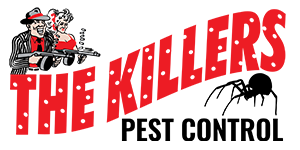Pest pests make colossal misfortune litchi through immediate and backhanded intrusion on different plant parts. Utilization of synthetic compounds has been one of the ordinary strategies to decrease these misfortunes, be that as it may, presently a-days because of different inappropriate incidental effects, pest the executives is depended upon numerous different choices alongside pesticides. The combination of this large number of choices is called IPM (Integrated Pest Management). Coordinated Pest Management is a methodology to oversee pests based on a framework approach that glances at the entire plantation environment. This incorporates an understanding of how the pests connect with their plant, with the overall climatic circumstances, plant wellbeing, and sustenance, and with one another. While carrying out an IPM framework, cultivators ought to choose ways of lessening generally pest levels in their plantation and guarantee that the administration of vermin is viable with their other harvest executives’ techniques. Cultivators should understand that the IPM framework is refreshed occasionally in light of natural changes that happen in their plantation and new procedures or advancements are presented when extra important data opens up. If you need more information on pests click here https://www.fdacs.gov/content/download/2984/file/pesticide
Coordinated Pest Management

Numerous pests are available on the plantation. Every one of them doesn’t cause monetary harm. A couple of them (key nuisance) may make harm to that degree where the commencement of activity becomes fundamental. Try not to apply pesticides by simply seeing a couple of pests on the plantation. Recognize other climatic and social factors that might decrease pest numbers or harm. There are numerous normal foes of pest pests; these are called hunters and parasites. Perceive these helpful pests, which are found in unsprayed plantations, and diminish pest harm in plantations.
- Visit your plantation regardless of whether there is no natural product, solely for pest record. Screen the rate of pests and valuable pests to decide the overflow, life cycles, and levels of harm. If conceivable, keep a pest record register. Record and sum up the observing data so connections and occasional patterns of nuisances’ harm and helpful pests can be perceived inside the plantation.
- Pests fluctuate with the age and phase of the tree. In this way, gather data on pest harm corresponding to the phenology (development designs) of the trees. Understand books, take the help of specialists or choose yourself for the ideal opportunity to apply control techniques.
There is a rundown of vermin control choices. Consider the control choices accessible and select from the rundown, which is the most appropriate to your ongoing conditions to limit the utilization of synthetic compounds.
There are synthetic substances that meaningfully affect regular foes. In this manner, select synthetic substances which limit unfavorable consequences for valuable pests.
- Keep your plantation overwhelming. Make endeavors to advance the nourishment of plantations since pest assaults are generally decreased in overwhelmingly developing sound trees.
- Realize that middle opening, evading and cleanliness like pruning activities can decrease some pest issues (for example scale/pest) by modifying the thickness of the tree, yet may increment others (for example shoot drill) by empowering flush development.
Significant Insect Pests
Almost 42 pest species and vermin pests have been accounted for to go after litchi trees and organic products in various phases of development; all things considered, litchi is somewhat liberated from any serious pests. Natural product drills, pests, nut drills, leaf rollers, and vermin are the significant pests influencing litchi creation.






